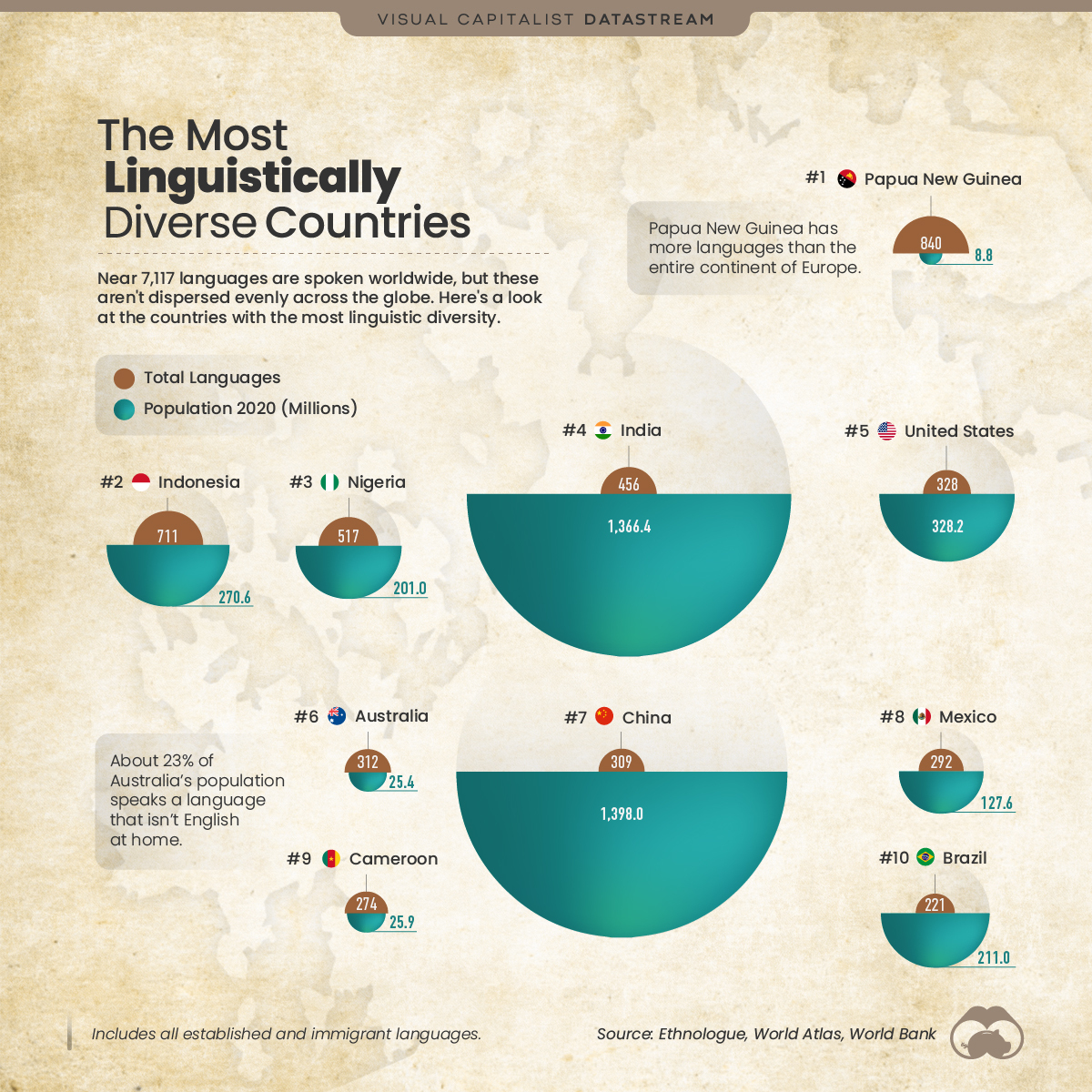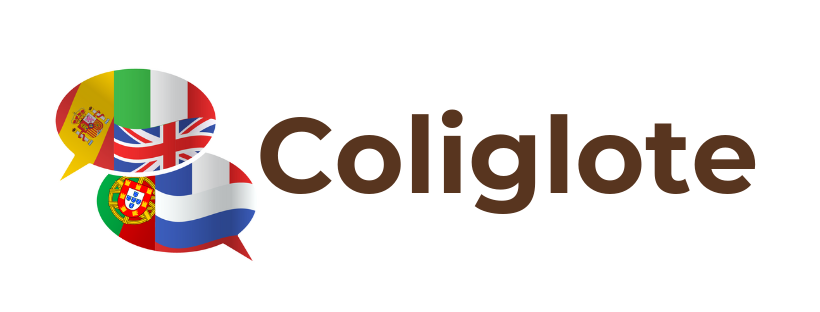Published on January 26, 2021 By Carmen Ang, Visual capitalist

| The Briefing Papua New Guinea is the most linguistically diverse country in the world, with approximately 840 different languages spoken across the islandsIn second place, Indonesia has around 711 different languages. Only 20% of the population speaks the national language of Bahasa Indonesian at home |
Ranked: The Most Diverse Countries By Language
Thousands of languages are spoken worldwide, but only a fraction are used widely. In fact, the speakers of 23 languages account for more than half of the total global population.
| Rank | Country | Total Languages | Population 2020 (M) |
| 1 | Papua New Guinea | 840 | 8.8 |
| 2 | Indonesia | 711 | 270.6 |
| 3 | Nigeria | 517 | 201.0 |
| 4 | India | 456 | 1,366.0 |
| 5 | United States | 328 | 328.2 |
| 6 | Australia | 312 | 25.4 |
| 7 | China | 309 | 1,398.0 |
| 8 | Mexico | 292 | 127.6 |
| 9 | Cameroon | 274 | 25.9 |
| 10 | Brazil | 221 | 211.0 |
Despite this, there are still pockets around the globe that are rich in linguistic diversity. Here’s a look at the top 10 countries where the most languages are spoken.
These numbers include established and immigrant dialects.
Top 10 Countries with the Most Languages
Despite a population of just 8.8 million, Papua New Guinea comes in first with a total of 840 languages spoken across the country. To put things into perspective, that’s almost 12% of the world’s languages spoken in an area that’s roughly the size of California.
A likely reason for the country’s linguistic diversity is its isolation from modern life. Over 80% of Papua New Guinea’s population lives in rural areas and has minimal contact with external influences or other tribes.
Second on the list is Indonesia, with 711 different languages used throughout the country. Like Papua New Guinea, a major factor that could explain its language diversity is its geography—Indonesia is made up of around 17,500 islands (although more than 7,000 of them are uninhabited).
The Future of Language Diversity
While it’s clear that a multitude of languages still exist, around 40% of the world’s languages are at risk of dying out. Even in parts of the world where immense linguistic diversity remains, languages are disappearing with each subsequent generation.
In efforts to combat this, organizations like the United Nations are actively trying to promote and protect these endangered languages.
Where does this data come from?
Source: Ethnologue
Notes: This database covers a majority of the world’s population and details approximately 7,111 living languages

